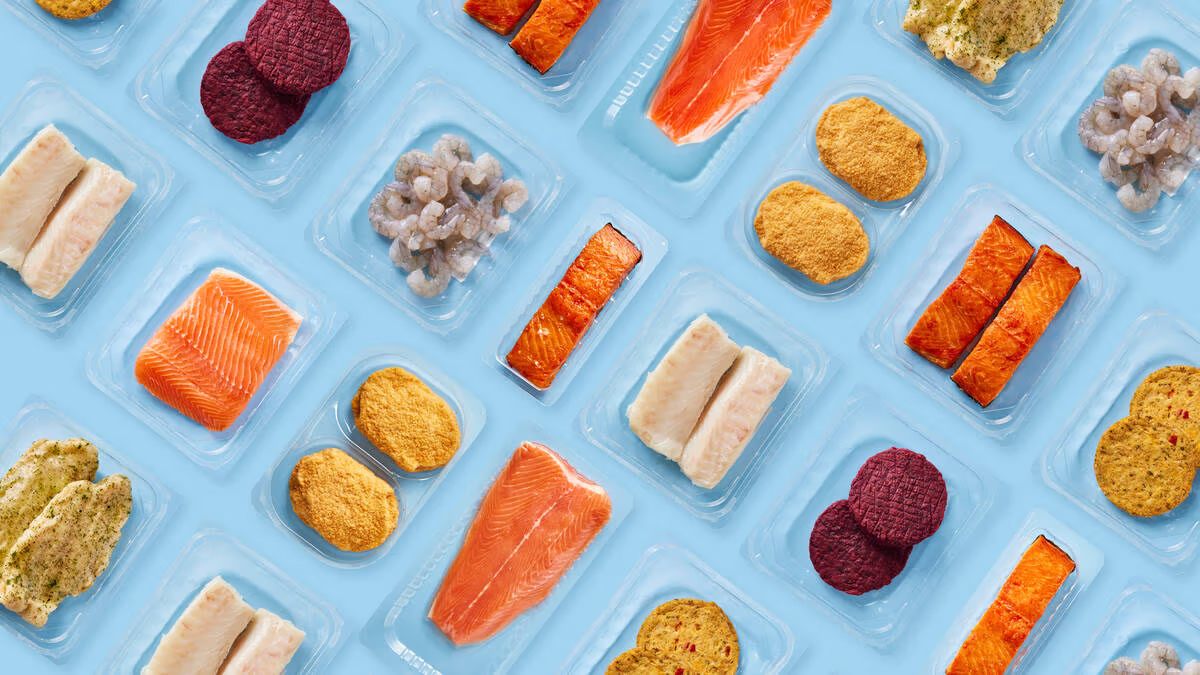The Seafood Packaging Market is evolving rapidly, driven by rising global demand for fresh, frozen, and processed seafood. As consumers become more health-conscious and environmentally aware, the need for packaging that ensures product safety, extends shelf life, and supports sustainability has never been greater. From vacuum-sealed pouches to recyclable trays and smart labels, seafood packaging is no longer just about containment it’s about innovation, compliance, and consumer trust.
Key Takeaway
The Seafood Packaging Market is at the intersection of food safety, environmental responsibility, and convenience. Packaging solutions are being designed not only to preserve freshness and prevent contamination but also to meet the growing demand for eco-friendly materials. With seafood being highly perishable, packaging plays a critical role in maintaining quality during transport and storage. The market is also seeing a shift toward intelligent packaging, which includes temperature indicators and QR codes for traceability, enhancing transparency across the supply chain.
Market Segmentations
By Material
o Plastic
o Metal
o Paper
o Other Materials
By Product Type
o Trays
o Cans
o Bags & Pouches
o Boxes
o Shrink Films
o Other Product Types
By Technology
o Modified Atmosphere Packaging
o Vacuum Skin Packaging
o Other Technologies
By Seafood Type
o Fish
o Crustaceans
o Molluscs
o Other Seafood Types
Market Dynamics
The Seafood Packaging Market is shaped by several dynamic factors. Increasing awareness of foodborne illnesses and the need for hygienic packaging are driving innovation in barrier materials and sealing technologies. Regulatory pressure to reduce plastic waste is prompting manufacturers to explore biodegradable and recyclable alternatives. At the same time, the rise of e-commerce and direct-to-consumer seafood delivery services is creating demand for packaging that is both protective and visually appealing. However, challenges such as fluctuating raw material costs and the complexity of seafood handling remain key concerns for industry players.
Key Players Analysis
Leading companies in the Seafood Packaging Market include Amcor plc, Sealed Air Corporation, Mondi Group, Berry Global Inc., and Winpak Ltd. These players are investing in R&D to develop sustainable packaging materials and improve product integrity. Strategic collaborations with seafood processors and retailers are helping them expand their market presence and tailor solutions to specific needs. The competitive landscape is marked by a focus on innovation, with companies racing to deliver packaging that balances performance, cost-efficiency, and environmental impact.
Regional Analysis
Asia-Pacific dominates the Seafood Packaging Market, accounting for over 50% of global revenue. Countries like China, Japan, and India are major seafood producers and consumers, driving demand for efficient and scalable packaging solutions. North America follows closely, with the U.S. and Canada investing in sustainable packaging and cold chain infrastructure. Europe is witnessing steady growth, particularly in the premium seafood segment, where packaging aesthetics and eco-certifications play a significant role. Emerging markets in Latin America and Africa are also gaining traction, supported by rising seafood exports and modernization of food processing facilities.
Recent News & Developments
Recent developments in the Seafood Packaging Market highlight a strong push toward sustainability and smart packaging. Amcor launched a recyclable high-barrier film designed for frozen seafood, reducing environmental impact without compromising shelf life. Sealed Air introduced a new skin packaging technology that enhances product visibility while minimizing material usage. Meanwhile, startups are exploring edible packaging and compostable trays made from seaweed and plant fibers. These innovations reflect the industry’s commitment to reducing waste and improving consumer experience.
Scope of the Report
The scope of the Seafood Packaging Market report includes segmentation by packaging type (flexible, rigid, semi-rigid), material (plastic, paper, metal, biodegradable), seafood type (fresh, frozen, canned, processed), and end-user (retail, foodservice, export). It covers market forecasts, competitive benchmarking, and emerging trends such as smart labeling, automation in packaging lines, and circular economy practices. The report provides actionable insights for stakeholders navigating a fast-changing market where freshness, safety, and sustainability are paramount.
As global seafood consumption rises, the Seafood Packaging Market size is redefining how we protect, present, and preserve the ocean’s bounty one smart solution at a time.

